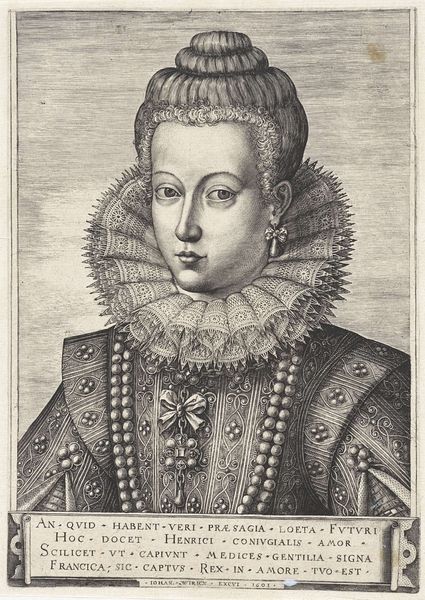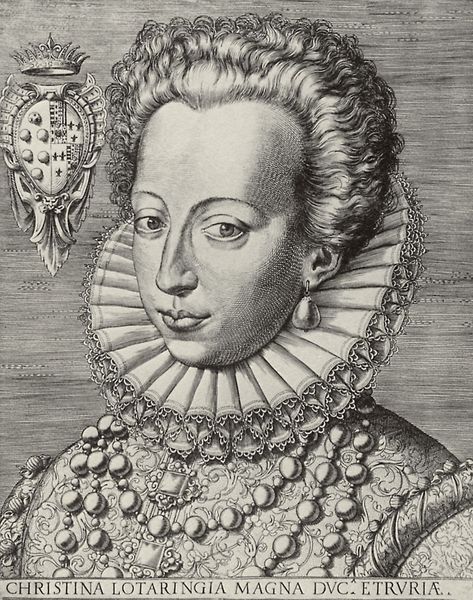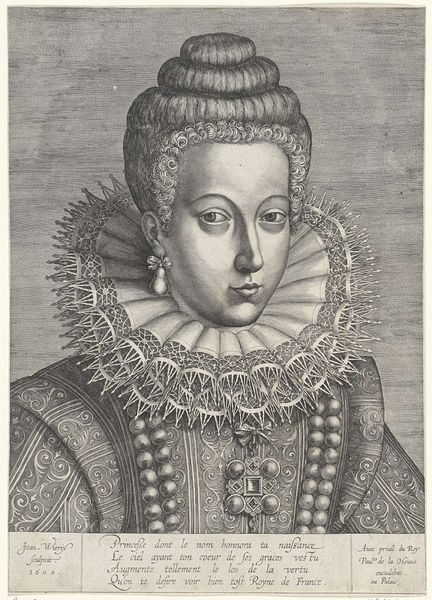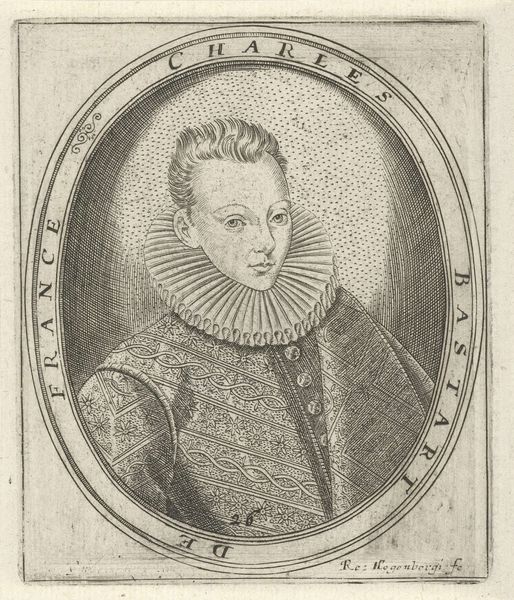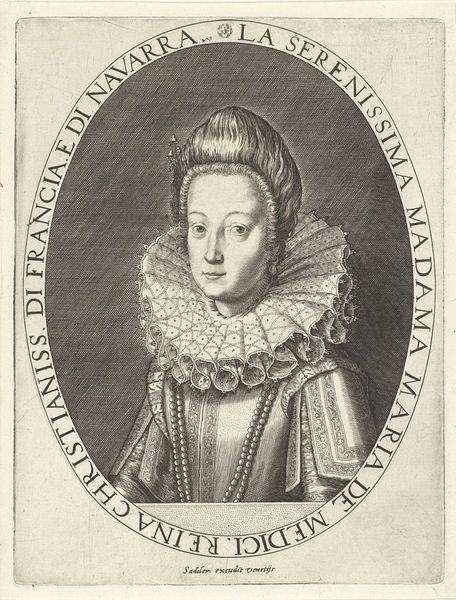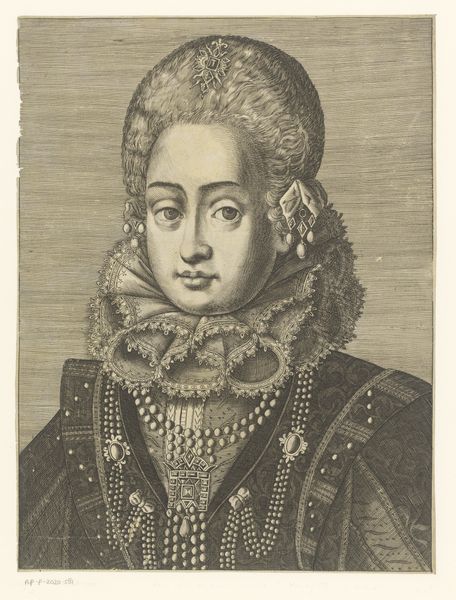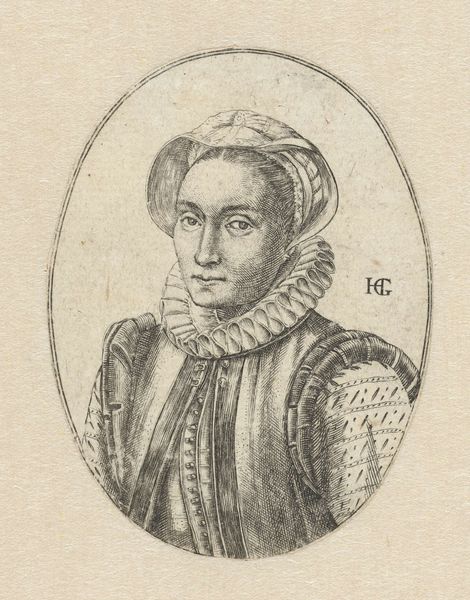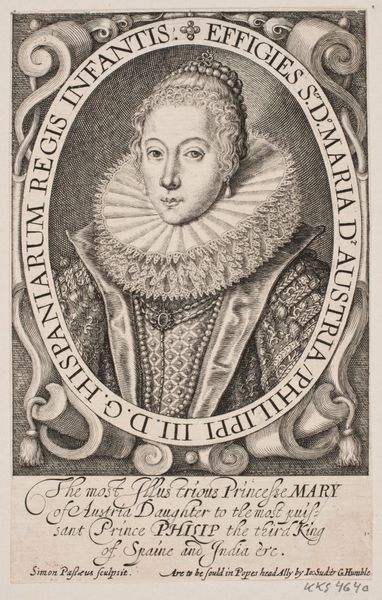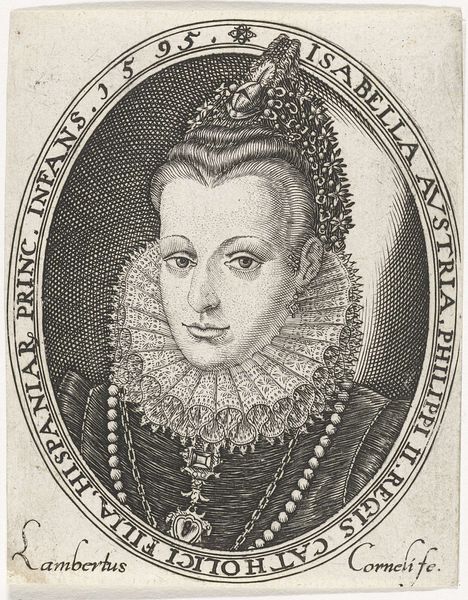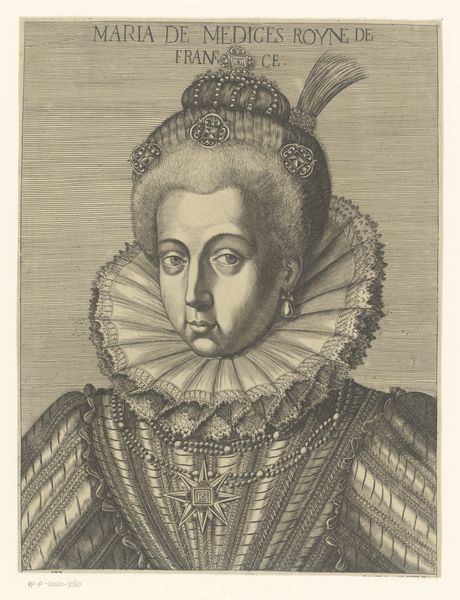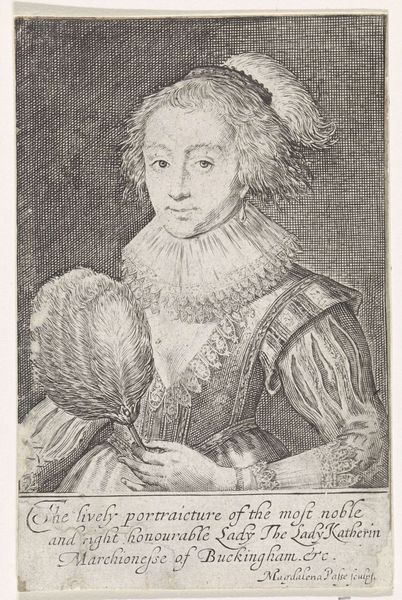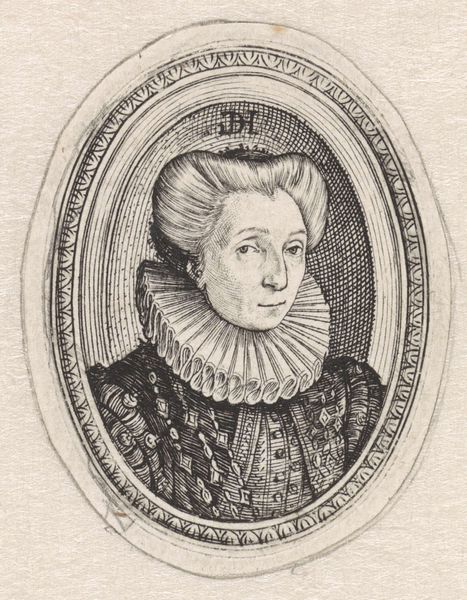
engraving
#
portrait
#
medieval
#
old engraving style
#
mannerism
#
figuration
#
line
#
portrait drawing
#
engraving
Dimensions: height 42 mm, width 50 mm
Copyright: Rijks Museum: Open Domain
Editor: Here we have a rather diminutive engraving entitled "Portret van Josina Hamels," dating back to 1580, created by an anonymous artist and housed at the Rijksmuseum. There's a stillness to the portrait, a sense of restrained power. What do you see in this piece that might be less obvious at first glance? Curator: I see a potent symbol of societal constraints and the performance of gender. Consider Josina Hamels' elaborate attire. The high ruff, the ornate sleeves, the tightly laced bodice - these aren't just fabrics; they're instruments of confinement. The clothing, indicative of wealth and status, simultaneously restricts movement and expression. It is crucial to question, what is being communicated about Josina Hamels through this carefully constructed image? What narratives are reinforced, and whose voices are suppressed? Editor: That’s fascinating! I hadn’t considered the clothing as a form of restriction, more just an indication of status. How does the historical context play into this? Curator: The late 16th century in the Netherlands was a period of intense religious and political upheaval. The rising merchant class, seeking to solidify its power, often relied on traditional notions of female virtue and domesticity. Portraits like these were tools for projecting an image of piety and social stability, reinforcing prescribed roles for women. Do you think the artist is complicit in or critical of this paradigm? Editor: That’s a really thought-provoking question. It’s hard to say definitively. The artist remains anonymous, so any interpretation is really a hypothesis… Perhaps their anonymity speaks to those very constrictions we are discussing. Curator: Exactly. The silence around the artist, juxtaposed with the loud statement of Josina’s image, creates a productive tension. It challenges us to consider the power dynamics at play in art creation and interpretation, particularly within the constraints of historical expectations regarding gender, class and the creation and consumption of art. Editor: This has really changed my view of the portrait. It's not just a representation of an individual but also of social and political forces at the time. Thank you!
Comments
No comments
Be the first to comment and join the conversation on the ultimate creative platform.
